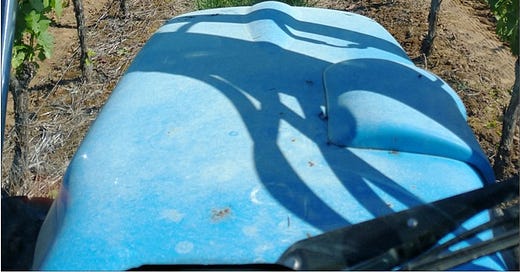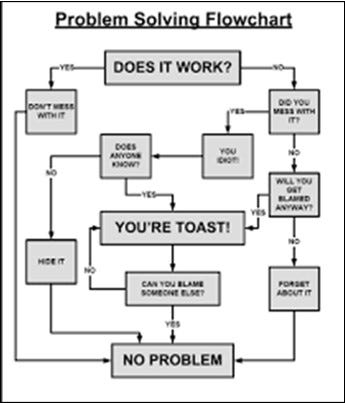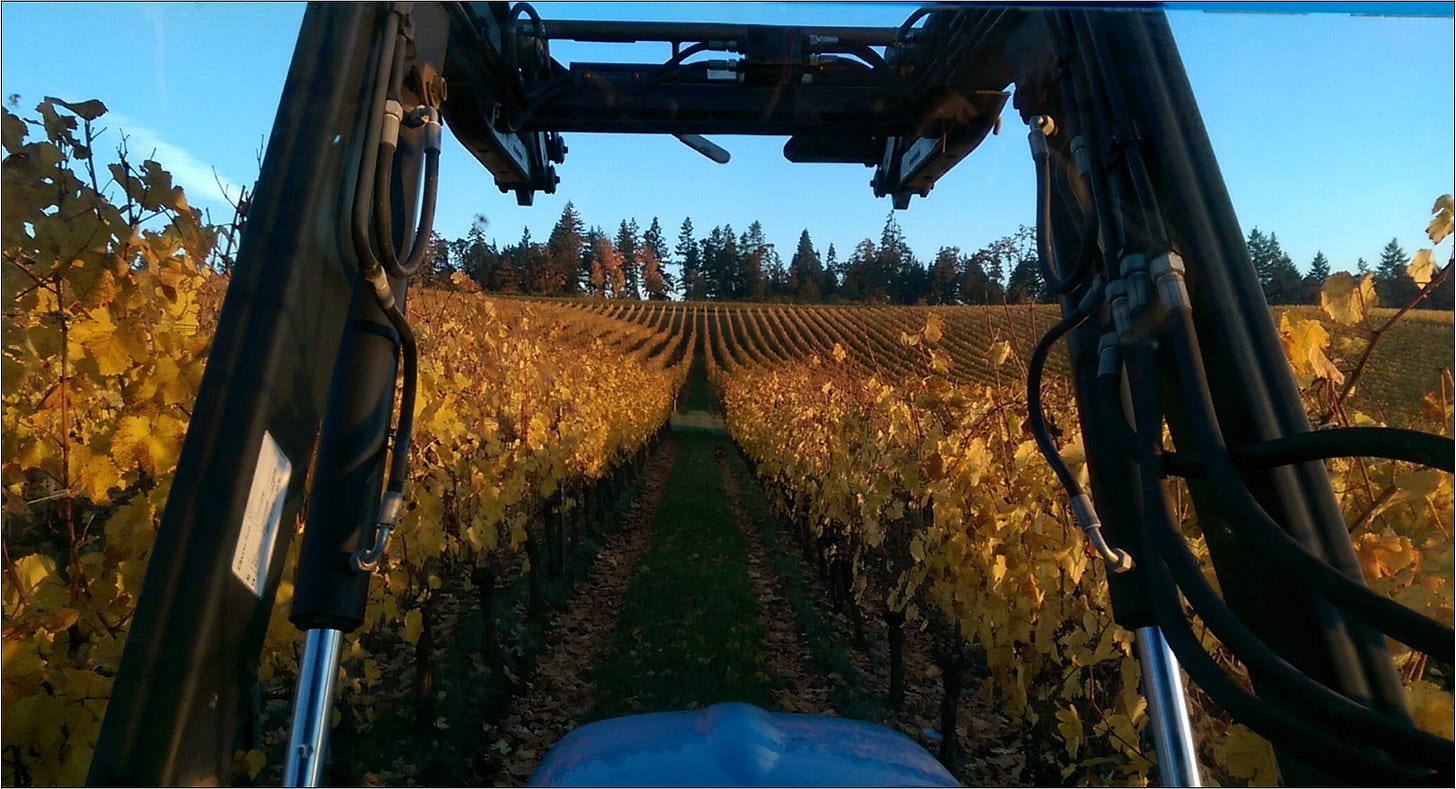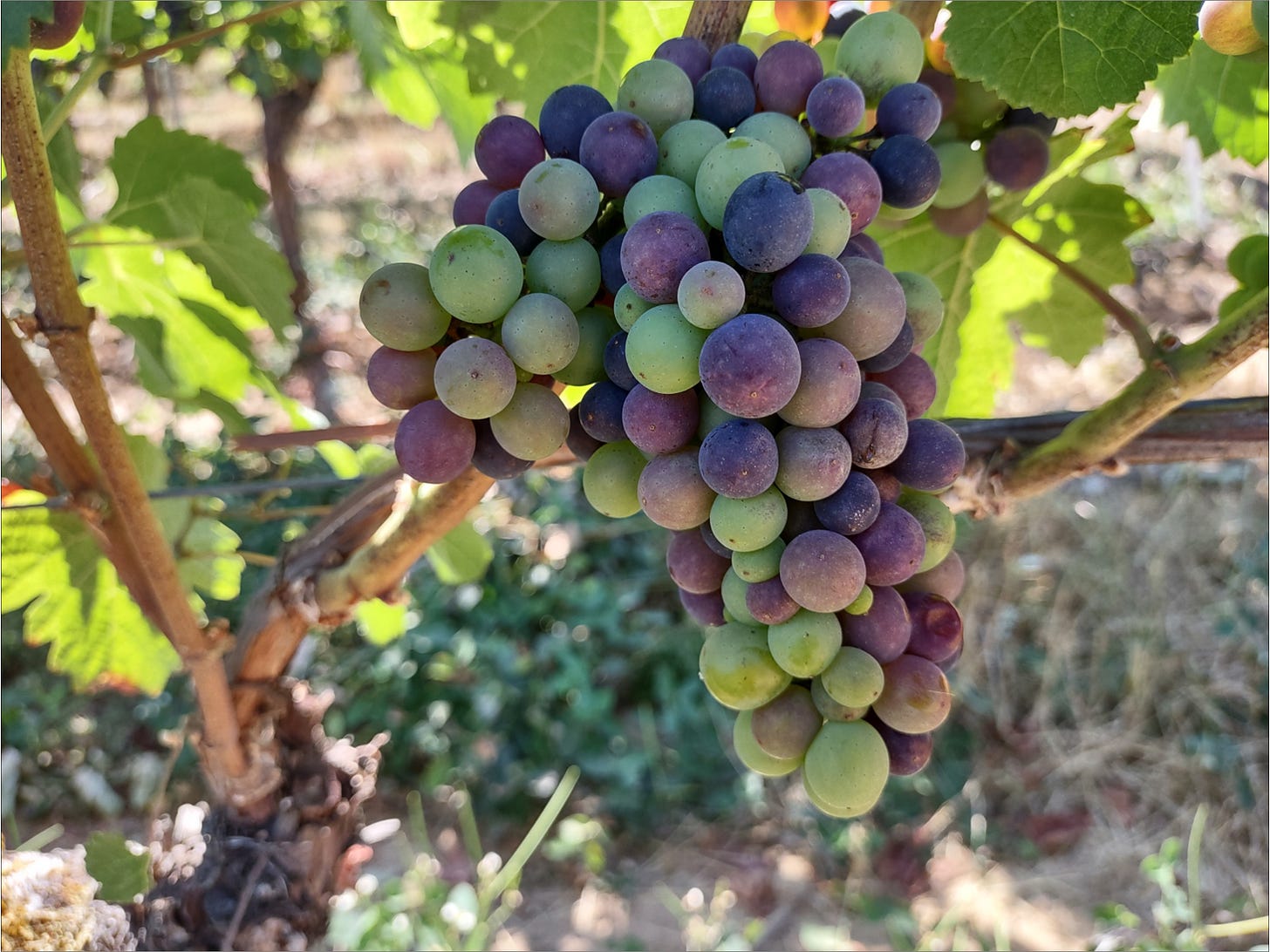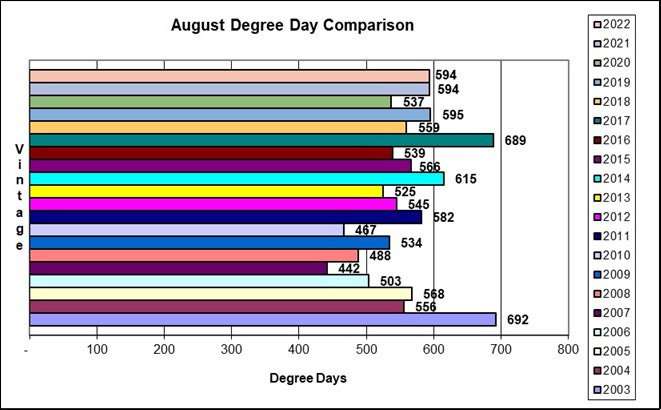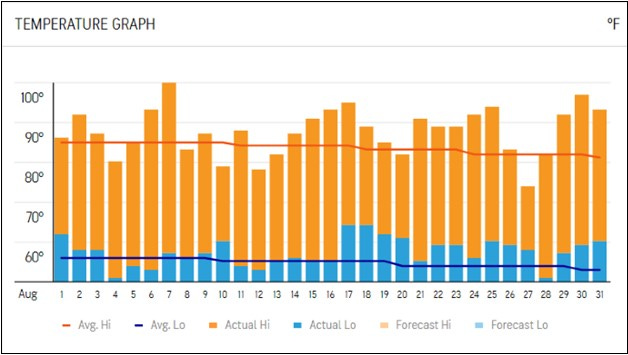Amalie Robert Estate Climate Update: August 2022
Hello and Welcome,
The Willamette Valley Pinot Noir Vintage 2022 near Mt. Pisgah is starting to come into focus. A cool spring, with plenty of rain charged the soil. The vines got a bit of a late start, after a potentially debilitating frost, but flowered nonetheless. That frost event was a reminder that site selection really is really, really important in growing Willamette Valley Pinot Noir. The rest, well that was good old fashioned canopy management and hedging. Lots and lots of hedging (and mowing) this year to control the vines explosive growth due to abundant soil moisture. But it looks pretty farming good from here.
The question we hear most often is “Do you like the vintage?” While this is a binary question expecting a yes or no response, there is indeed a third response in the farming idiom, to wit: “Well, we are starting to get used to it.” If you earned an MBA in the last 50 years, the third response is always, “It depends.” Not overly helpful, but the first step in a series of CYA maneuvers as illustrated here:
The Big Picture
This image was taken by our Chief Farming Officer while seated in his mobile office, aka the tractor seat. Ernie is fortunate in that the 500 or so tractor hours he logs each year, gives him a unique perspective of the growing season. This was one of those “You had to be there” moments, and he was. It is also the image we chose for our NEW WEBSITE! Go ahead, give it a click!
Dena is the dominatrix of all things internet. It takes a strong woman with a dedication to a process that can force the internet of things to conform to her “tendencies”. Also, not her first rodeo. Dena has written all of our websites since we began back at the turn of the century. But this is her best work to date. Streamlined for mobile devices, and also fully functional on any computer.
We would love your feedback. If you have time, please send any comments, thoughts or suggestions to Dena at dena@amalierobert.com.
The challenge was finding a way to retain all of the content we have generated over our 20+ year tenure. For that, we chose Substack as the repository of our stories, our brand terroir. We have posted all of our FLOG’s on Substack. Subscriptions are free, but you don’t have to subscribe to view our 200 plus posts. You can check out Substack for FREE here.
And the last part of the internet trifecta is Instagram. Since we live among the vines, we have 24x7 access to what is, and is not, happening in our estate vineyard. Follow us, and you can see what we see, when we see it.
The Main Story
In fact, we do like what Vintage 2022 is showing so far. But Mother Nature is still holding a few cards that are going to have a strong impact on how we finish things up. The big ones are heat accumulation, rainfall, and wildfires.
Let’s tackle heat accumulation first. We track growing degree days. This is a construct to understand how much heat the vines have been subject to during the growing season. April through August heat accumulation is largely responsible for getting wine berries be-dangling from the vine. So far we are a little below average, but not significantly. In Vintage 2022, September and October (if we get that far), will put the finishing touches on the aroma and texture of the wines. Ask the Oldtimers, and they will tell you this is typical Willamette Valley Pinot Noir growing conditions of years past.
And then there is our constant companion the Jet Stream. The Jet Stream is the great atmospheric mixer that brings “new to you” air from other parts of the atmosphere. Depending on where the Jet Stream intersects with the West Coast, the weather will have a significant impact on the vintage.
https://www.accuweather.com/en/weather-forecasts/september-swelter-dangerous-heat-wave-continues-to-roast-west/1241973
Hot and dry south, southeast-east winds can desiccate the wine berries and force an early harvest due to excessive sugar concentration. A mid-September typhoon can bring torrential rains that may have the opposite effect and add rot to the mix. But the forecast calls for none of these anomalies. We are forecasted for warm, sunny days, an occasional shower and cool nights. While this sounds pretty farming nice, it is the best case scenario and therefore unlikely to come to fruition in the agrarian endeavor.
But we could use some rainfall. The last meaningful and measurable precipitation was July 6th when we were gifted 0.16 inches of rain. While the vines look green and lush now, it has been quite a dry spell. But not uncommon for our Xeric soil moisture regime. It is only a matter of time now before the rootzone is fully depleted of available soil moisture. When this happens, the vine will start to translocate water from the wine berries to sustain itself. So, it’s kinda like being at that ski resort waiting for snow. You don’t know when you are going to get it, how much you are going to get or how long it will last. But since we are dry farmed, our only strategy is wait and hope.
Wildfires are again burning in the Pacific Northwest and California. This link will provide you with the latest update for Oregon and Washington. Depending on the Jet Stream we can have clear or hazy days. While the Jet Stream vacillates from Seattle to San Francisco, it has a significant influence on how the Pacific Northwest can be heavily impacted by heat and wildfires from the entire West Coast. And that brings us to the Air Quality Index.
Air quality is rated from excellent with light green to unhealthy with red and dangerous with purple. As we can see here, the Willamette Valley stretching from Portland to Eugene is looking pretty good. Looking farther south into California we see the effects of wildfires on air quality. If you want to check your neighborhood's Air Quality Index, follow this link to AccuWeather.
The Jet Stream can change that overnight, and bring all of that unhealthy, hot air right up into the Willamette Valley. When the jet stream is north of the Willamette Valley all of that heat (and smoke and particulate matter) from the south comes up to interact with our environment. We would like to see the Jet Stream head south just a bit. That makes our major weather influencer the Gulf of Alaska, where we would have cooler temperatures and clean air.
What Does This Mean and Why Should I Care
Hope for the best and plan for the worst. Farming wine is an agrarian endeavor. Despite the best laid plans, and inputs into the system, things can go horribly wrong. As we bore witness in Vintage 2020, not all the grapes that are grown get to make it into a bottle of wine. But that is the general idea.
And who knows where the Medial Collateral Ligament is? Ernie does. And Dena is finding out all about it. Along this quest for knowledge, we have both discovered that a 3-pound bag of frozen blueberries is just the right thing to apply 15 minutes of therapeutic icing to an inflamed MCL. The downside is it makes you want to eat blueberry pancakes… Every hour, on the hour. Goes with the inflammation reducing TB12 Turmeric Smoothie.
The Numbers
Welcome to the numbers section of the Aug. Flog. We must say, August put in a diligent effort in the Degree Day department. Our high temperature reached 105, but only for a minute or two. A fast horse doesn’t run long. And we are seeing rapid color change in our Pinot Noir. About half the wine berries on each cluster have made the change from green to purple.
Heat accumulation for the month of August was 594.1 Degree Days, split between the first half of the month with 263.4 degree and and the second half with 330.7 Degree Days. Think about that for a minute. The later into August we go, the more heat we received.
This was certainly influenced by our old friend the Jet Stream bringing heat and smoke particulate matter into our atmosphere and helping to hold in the Earth’s warmth. Here is what that looks like from the National Oceanic and Atmospheric Administration (NOAA). It is called a Red Flag Warning. You may want to check your AQI before working outside if you are under an RFW.
The high temperature for the month was 105.4 degrees recorded on August 30th at 4pm. The low temperature was 47.7 degrees recorded the morning of August 28th from 6:00 to 6:30 am. Alas, there were clouds, but no rain. Growing season to date Degree Days stand at 1,683.2. Add another 300 to 400 Degree Days in September thru October, and BAM! We are looking at a very respectable vintage.
Once again, this AccuWeather graphic provides a good representation of the month. We do not anticipate any cluster plucking during September, but as we have demonstrated that could change overnight with the Jet Stream. As farmers, we are kept on a need to know basis. And right now, we don't need to know.
Kindest Regards,
Dena & Ernie

